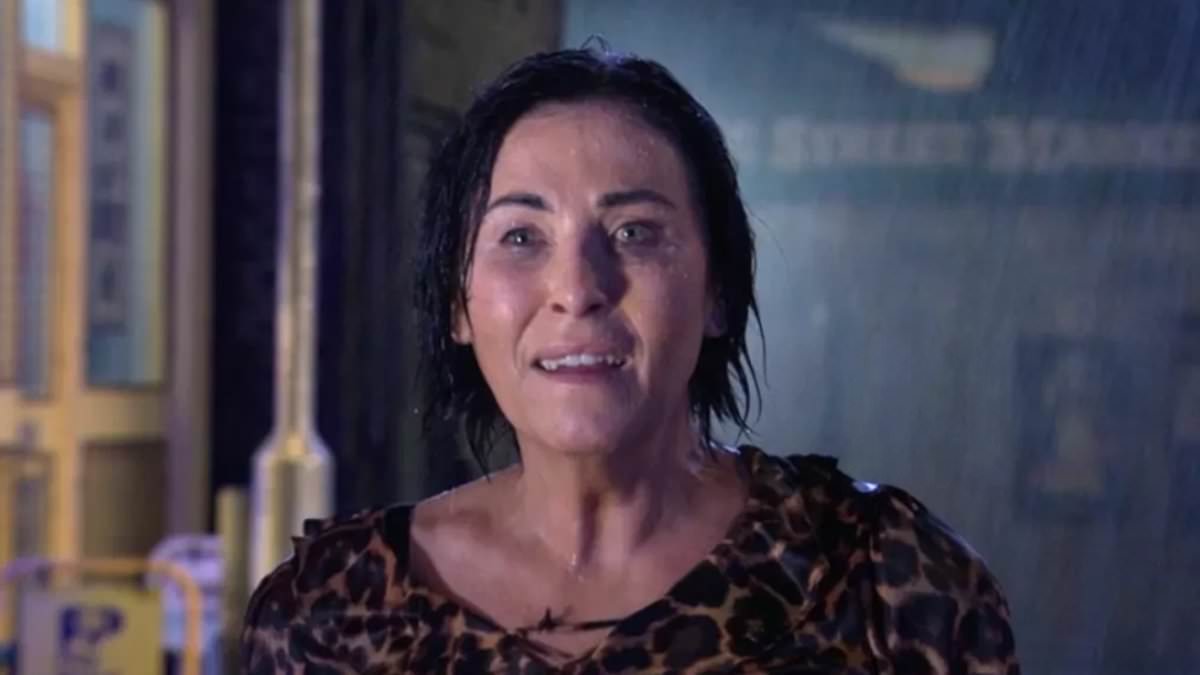By Newsday
Copyright newsday

BAVINA SOOKDEO
The government’s initiative to place police officers in schools has sparked a national debate on how best to support at-risk youth. Educators, social workers, community leaders and law enforcement alike acknowledge that children need guidance, safety and opportunities – but differ on how these are best delivered.
Child-centred approaches
For Marcus Kissoon, a human rights advocate and PhD candidate in childhood studies at Rutgers University, the issue is not whether children need support, but what kind. “I am not against police officers or national resources being allocated to children. I think that is an excellent use of our resources,” Kissoon said. “But we cannot accept a militarised version of children’s development.”
Kissoon draws on his own experiences teaching in Servol’s Adolescent Development Programme where he worked with youth who had been excluded from mainstream schools. Many carried the stigma of being labelled “troublesome” or “violent.” Yet, he insists, what transformed their behaviour was not discipline through domination but the creation of spaces rooted in dignity, shared responsibility and unconditional support.
“At Servol, the focus was not just on developing skills, but on centring the children – their existence, families, communities, spiritual growth,” he explained. “Servol has always been a solution to violence in school because the minute somebody fights, their opportunity to be in mainstream education goes out the drain, and then they negotiate a space in Servol. They have been doing it for a very long time without prejudice, with unconditional support and love for students, and with less resources than many other state institutions.”
Established in 1970, Servol is a human development agency working people and communities to provide life and job skills training and support
For Kissoon, this is the heart of what works: models like Servol that invest in children as whole beings rather than problems to be controlled. “No institution should ever abandon children and give them the sense that they’re abandoned. And yet we have that failure system throughout all sectors in Trinidad and Tobago. Servol shows us another way.”
He warned that introducing police into schools risks reinforcing “colonial-patriarchal” logics that see working-class children primarily as threats. Instead, he urges policymakers to revisit why previous initiatives failed and to consider how investments in social workers, mentorship and child-centred programming could create more empowering school environments.
“We need classrooms that disrupt the assumption that children must be controlled. We need interventions that cultivate shared responsibility, gender consciousness and social awareness, so that young people can understand themselves not as threats but as vital contributors to society,” he said.
Kissoon insists the voices of children themselves must not be left out. “If they see something that is working, they have the right to say it. If they see something that makes them uncomfortable, they should be able to question it. That is their right,” he said. “Let us not reproduce notions of who deserves care. Every child deserves dignity, safety and the chance to grow.”
Balancing safety and atmosphere
Social worker and community change agent Kleetia Alexander highlighted the complex challenges faced by vulnerable students, including weak support systems, bullying, hostile learning environments, low self-confidence, gang involvement, mental health issues, behavioural problems, academic struggles, and poverty. She explained that factors such as peer pressure, lack of guidance, and a desire to belong often lead to resistance to authority and risky behaviours, while experiences of sexual, emotional, or physical abuse can severely impact a young person’s overall well-being.
Alexander agrees that placing officers in schools may create a sense of safety, but cautions that the atmosphere must be carefully managed. “…the placement of the officers within these schools is an excellent initiative to assist in fostering a safer learning environment for teachers, students and support staff. I believe that this initiative will impact students in a positive manner because a clear message is being conveyed that, violent and disruptive behaviours will not be entertained. I believe that the presence of the officers in schools can make students feel safer and it can also create a tense atmosphere as well,” she noted.
To combat this uncertainty, she said, the support and guidance of parents, teachers and Student Support Services Division personnel, who understand the pros that accompany this initiative can help to discourage a negative overview.
Beyond policing, Alexander emphasises proactive strategies that centre mentorship, intervention and empowerment. “Some of the approaches that have been proven effective includes mentorship initiatives, intervention by the student support services body, conflict de-escalation strategies, crisis intervention, community outreach activities, team building activities and themed sessions on issues directly impacting our youth,” she said.
Alexander emphasised that teachers need timely access to resources, opportunities to expand their knowledge, and ongoing professional development to strengthen their capacity. She also highlighted the importance of involving educators in decision-making on issues that directly affect them and practical support to help them cope with challenges. She said, “…the collaborative effort between parents, teachers, the Ministry of Education, stakeholders and the community; is essential when addressing issues faced by at-risk youth to ensure that there is a shared vision that promotes the right atmosphere for growth and development.”
She stressed that to effect change, it is recommended that parents ensure they instil the importance of developing and maintaining values and productivity within their children’s life from the formative stages. “It is also recommended that the community develop a supportive mindset instead of promoting disruptive and destructive behaviours labelling them as ‘rights of passage’,” she said. She emphasised that agencies must act with honesty and integrity, while students should envision their future, set clear goals, and work diligently with proper planning to achieve them.
Policing as partnership
For corporal Derrick Sharbodie, founder and manager of the St James Police Youth Club and a veteran of 33 years in community policing, the initiative is long overdue. “This, in my mind, is a step in the right direction,” he said. “I’ve been working with schools for years and I’ve seen the evidence of police officers who are knowledgeable, who are well-trained – the impact it would have, and the importance of equity. No police officer can bring the school to order alone, but if they properly network with deans, principals, safety officers and parents, you will find the question of violence in school being addressed.”
He added, “I would like to congratulate the Minister of Homeland Security along with the Minister of Education and our very own Commissioner of Police for a bold step in the right direction, and DCP Benjamin who saw the introduction of the School-Oriented Police Officer programme.”
Sharbodie’s commitment to bridging the gap between police and youth goes back to 1992 when he founded the St James Police Youth Club. “There was a disconnect between the police and the youth, and there was a feeling that police were out to lock up every young person – which was not the case. I wanted to give a different picture, to show that we are concerned about the choices young people are making,” he explained. His lectures on law, life choices and personal responsibility quickly became popular in schools, with teachers requesting repeat sessions.
Today, however, the challenges facing youth have deepened. “Some of the greatest challenges young people face are having poor exemplars, a lack of communication, and the absence of fathers in the home,” Sharbodie said. “They are crying out for genuine love. They feel cheated by the toxic environments that have been provided for them.” He noted that many young people, especially from single-parent homes, feel forced to fend for themselves. Poverty often pushes them to leave school by form two or three to find work, making it difficult to prioritise education.
The root causes of school violence, Sharbodie explained, stem largely from such toxic home environments, abuse and anger. Many students struggle with illiteracy, leaving them unable to function academically and more likely to resort to violence. He added that negative adult influences and the glorification of violence on social media also contribute to normalising aggression among young people.
While some critics of the government’s initiative fear a police presence in schools could criminalise youth, Sharbodie emphasised the difference between reactive policing and proactive engagement. “Police in schools is an excellent idea, but it needs to be upgraded. Officers need to continue to be trained in best practices, in youth violence, in the laws and rights of a child, and they need to develop relationships within schools. Instead of being reactive, I think this is a proactive approach.”
He believes the presence of officers serves multiple functions: reassuring staff, protecting law-abiding students, and sending a clear warning to those considering disruptive behaviour.
Sharbodie insists policing alone isn’t enough. Alternative strategies, like the 2011 Police Youth Club suspension centre, engage students constructively, with many eventually joining the club or being referred to Servol, YTEPP, or trade schools. He added that culture and sport are also effective in guiding youth.
Mentorship, too, is a cornerstone. Through initiatives such as Men as Mentors and Boys Without Fathers, support systems for young men and women have been built. “A national mentorship programme is required, not just in the west but throughout TT, to rescue our young people and safeguard them from poor choices.”
Sharbodie emphasised that at-risk youth are often shaped by the environments adults create, making it essential to foster peace, partnership and support. He urged parents to strengthen their parenting skills, policymakers to properly fund organisations like police youth clubs, Milat and the private sector to invest in proactive initiatives. “We need to move young people from at-risk to at-promise,” he stressed.
Addressing root causes
Community activist, ordained Bishop Ezekiel Clarke, who also serves as president of the Couva Police Station Community Council and vice president of the Lisas Gardens Community Council, works closely with law enforcement and vulnerable youth. For him the biggest concerns are the lack of opportunities, weak family support systems and negative influences that creep into communities. “Many young people face peer pressure, unemployment and feelings of neglect” he said. “When young people don’t see a path to a better future, they become vulnerable to crime and destructive choices.”
On the government’s initiative to place police officers in schools, Clarke believes “it’s a step in the right direction, if it is handled wisely.”
“The presence of officers can help to deter violence, but the approach must be one of mentorship and guidance, not just enforcement. The aim should be to build trust and protect our youth, not make them feel criminalised.”
For Clarke, the key lies in balance – “If police come in as mentors and positive role models, it can reduce violence and strengthen respect. But if the relationship is heavy-handed, it can create fear and mistrust. It’s about striking the right balance, discipline with compassion.”
He highlighted successes at the Couva Police Station Community Council, where officer-community partnerships foster safer environments. “When police and community groups listen, engage in dialogue, create youth-friendly programmes, and act consistently, young people feel seen, heard and are more likely to cooperate.”
Among the initiatives that have worked best in steering youth away from crime, Clarke highlighted “sports, skills training, and mentorship programmes” which give young people safe spaces, creativity, discipline and caring guidance. “Programmes that combine discipline, creativity and opportunities for growth always yield the best results,” he said.
Clarke also stressed the need for stronger collaboration between faith-based groups, schools, and the police: “If these three groups collaborate, share resources, and consistently engage with youths, we can build a support system that addresses their spiritual, educational, and social needs.”
Clarke agreed that discipline alone is insufficient, stressing the need to address root causes like poverty, broken homes, and lack of opportunities. He called for national programmes in mentorship, entrepreneurship, culture, sport, and skills development, alongside stronger partnerships between schools, communities, and industries, and greater investment in family support services.
“If we can empower youth with hope, skills and discipline, we can shift the direction of an entire generation,” he said.



